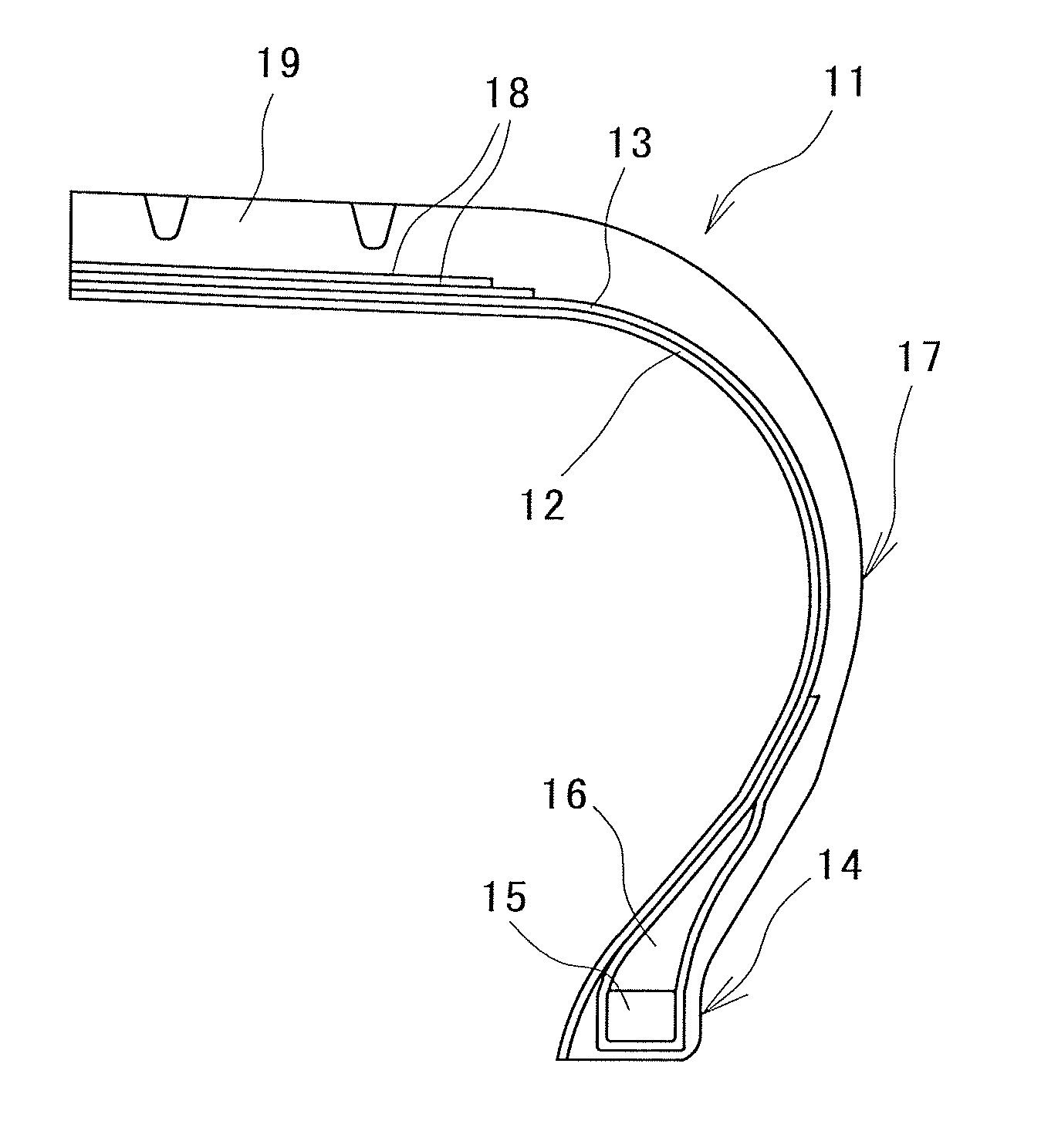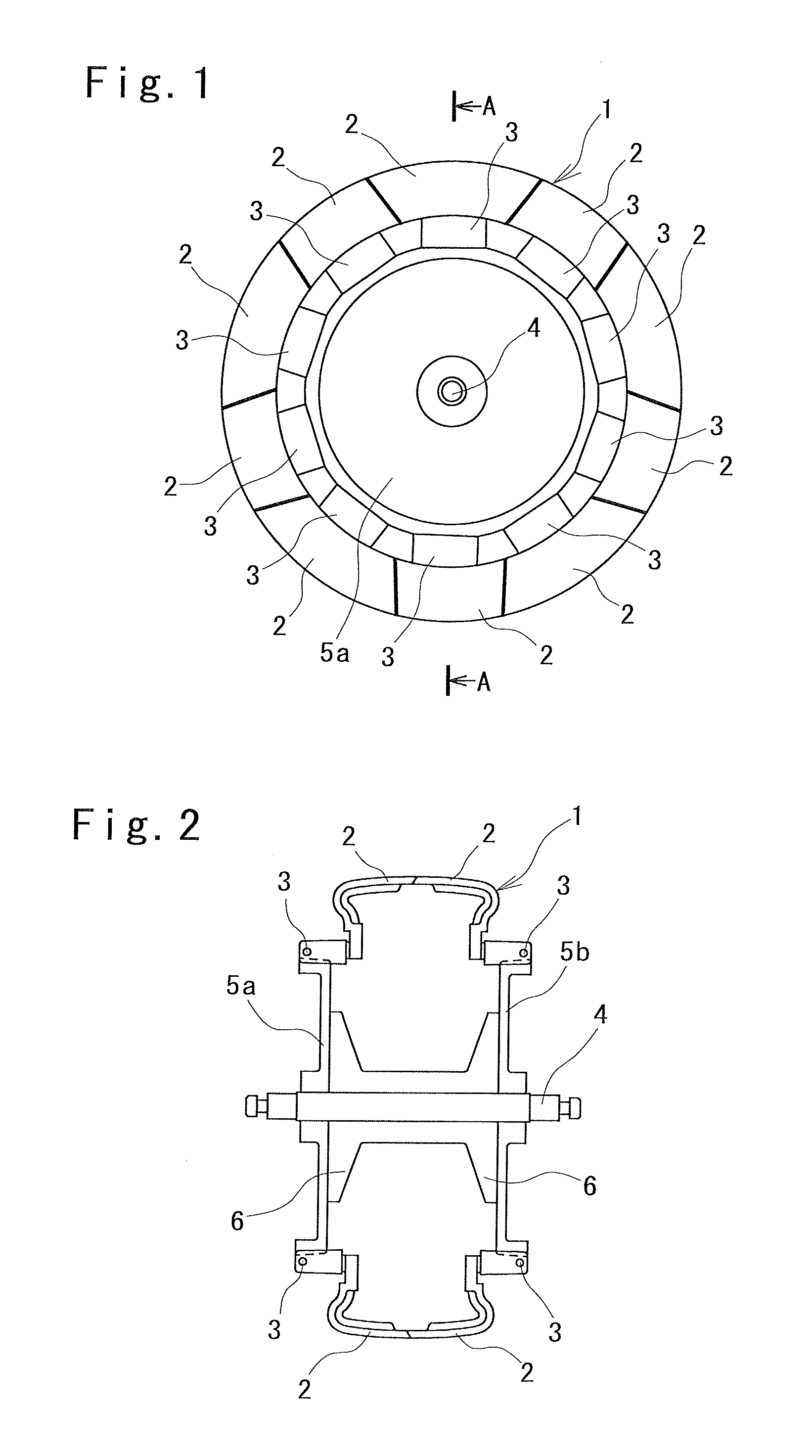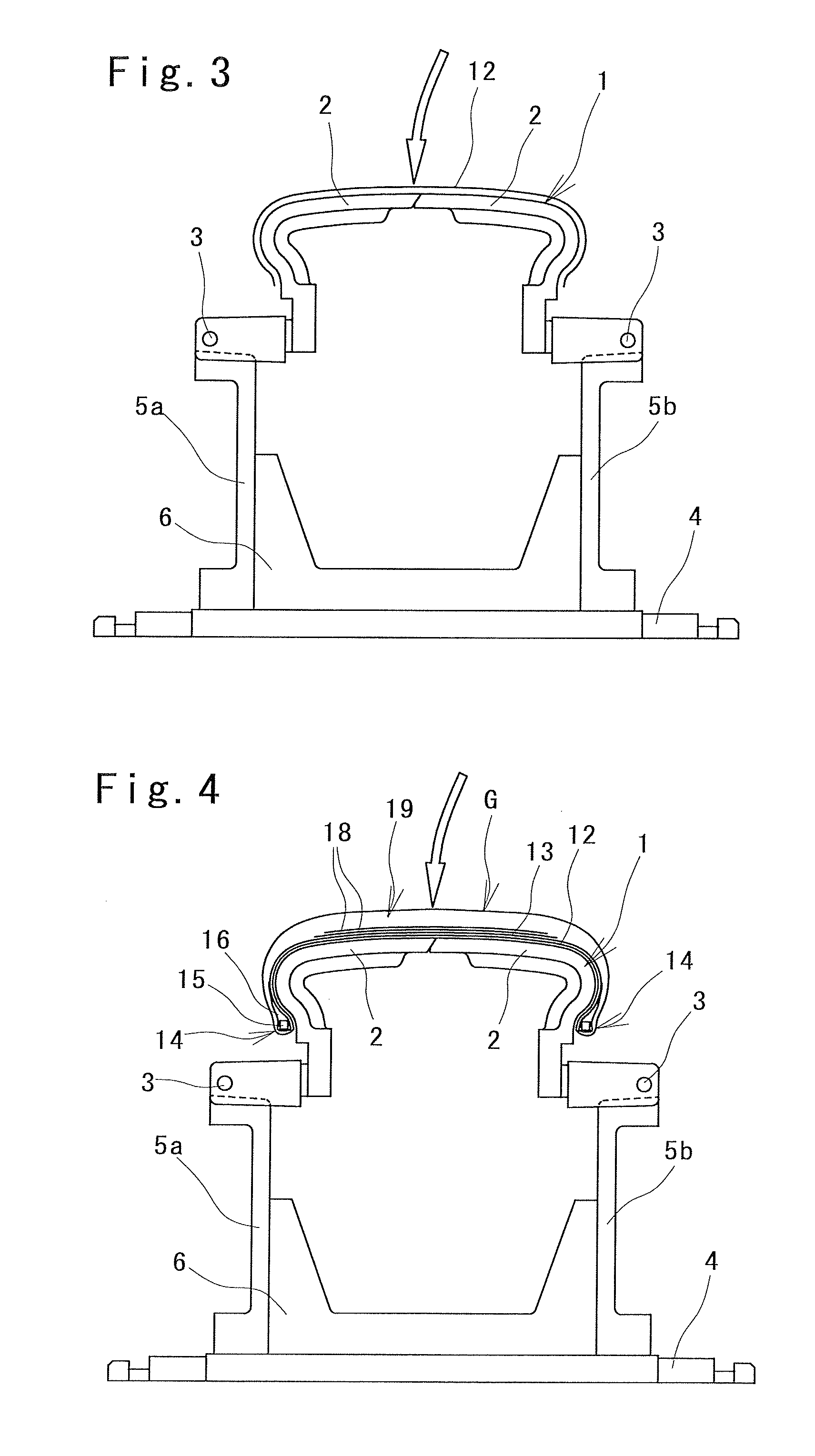Process for producing pneumatic tire
a pneumatic tire and process technology, applied in the field of pneumatic tire production, can solve the problems of small amount of pressing force acting on the inner circumferential surface of the green tire, difficult to correct, and limited improvement in the uniformity of the vulcanized tire, so as to improve the uniformity of the tire to be produced, improve the gas-barrier properties, and improve the effect of uniformity
- Summary
- Abstract
- Description
- Claims
- Application Information
AI Technical Summary
Benefits of technology
Problems solved by technology
Method used
Image
Examples
Embodiment Construction
[0033]Hereinafter, a description will be given of a process for producing a pneumatic tire of the present invention on the basis of an embodiment illustrated in the drawings. Note that the same reference numerals are used to denote the same components before and after vulcanization.
[0034]FIG. 10 exemplifies a pneumatic tire 11 produced according to the present invention. In the pneumatic tire 11, a carcass layer 13 is laid between a pair of bead portions 14. The carcass layer 13 is folded back around a bead core 15 from the inner side to the outer side, while sandwiching a bead filler 16. A film 12 is provided at the inner circumferential side of the carcass layer 13 as an inner layer to prevent air permeation. A rubber member forming a sidewall portion 17 and a rubber member forming a tread portion 19 are provided at the outer circumferential side of the carcass layer 13.
[0035]In the tread portion 19 at the outer circumferential side of the carcass layer 13, belt layers 18 are prov...
PUM
| Property | Measurement | Unit |
|---|---|---|
| thickness | aaaaa | aaaaa |
| thickness | aaaaa | aaaaa |
| temperature | aaaaa | aaaaa |
Abstract
Description
Claims
Application Information
 Login to View More
Login to View More - R&D
- Intellectual Property
- Life Sciences
- Materials
- Tech Scout
- Unparalleled Data Quality
- Higher Quality Content
- 60% Fewer Hallucinations
Browse by: Latest US Patents, China's latest patents, Technical Efficacy Thesaurus, Application Domain, Technology Topic, Popular Technical Reports.
© 2025 PatSnap. All rights reserved.Legal|Privacy policy|Modern Slavery Act Transparency Statement|Sitemap|About US| Contact US: help@patsnap.com



